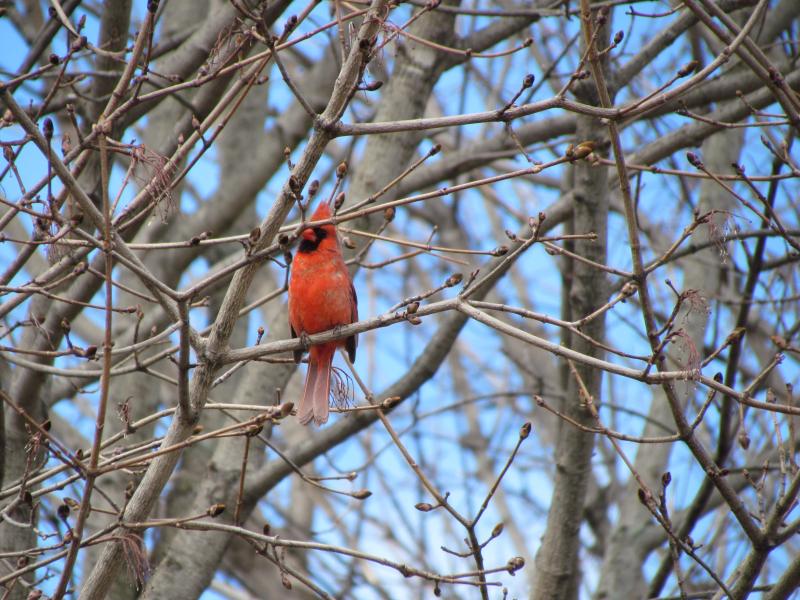Doing a duet
Great horned owls do it. Northern cardinals do it. Rose-breasted grosbeaks do it — duet, we mean.
While we think of males as being the sex in birds that does most of the singing (and they are), increasingly, researchers are discovering more and more bird species in which the female also sings at least occasionally.
But the infrequency of these songs means that they have gone undocumented in many species, even by experts. Seeing and hearing it for yourself may take some concentrated effort.
An ornithologist studying northern cardinals found that while the males sang on average about 100 times per hour, the females sang about 10 times per hour and only during a few weeks prior to nest building. He devoted 45,000 minutes of observation and documented females singing only 207 minutes of that time!
In the species that have been studied, the female songs are often given back and forth with the song of her male mate in what has been termed a “duet.”
Although many people don’t realize it, they may actually have heard female song as part of a duet if they have ever listened to two owls calling back and forth. Owls are well known for mated pairs calling back and forth in the early part of their mating season.
Great horned owls can sometimes be heard doing this even in December or January, and in that species, it’s quite easy to hear that one bird’s vocalizations are higher than the other—those are the calls of the female (even though in owls the females are larger than the males).
Female rose-breasted grosbeaks sing occasionally and have even been found singing softly while sitting on the nest. Female songs do not generally seem to serve the same purpose as male song, which is typically for territorial defense or mate attraction.
Female songs and dueting behavior is instead thought to mostly serve as a pair-bonding mechanism, but it may also help in some species to keep fledglings near their parents. Several researchers have even suggested that female songs may sometimes serve as a way to bring the male back to the nest quickly in cases when danger is present — successful because the male may mistake the female song for an intruding male.
The list of birds in which female song has been observed or possibly observed includes many of the common birds any of us could see in our own backyards including gray catbird, American robin, house wren, American goldfinch, and Baltimore orioles as well as the previously mentioned northern cardinal and rose-breasted grosbeak.
Some species are reported to “duet,” but the female vocalizations are not characterized as songs, as they sound more like chattery calls. Carolina wrens, brown-headed cowbirds, and red-winged blackbirds all engage in this type of duet behavior. We often hear house sparrows doing this kind of duet in the spring although the male’s vocalizations don’t sound much like what we normally think of as a song but are more of a series of short, harsh notes.
Isn’t it wonderful that there are still so many discoveries yet to be made? Maybe you will be the first person to document female song in one of the birds in your backyard!
Event Date
Address
United States

























